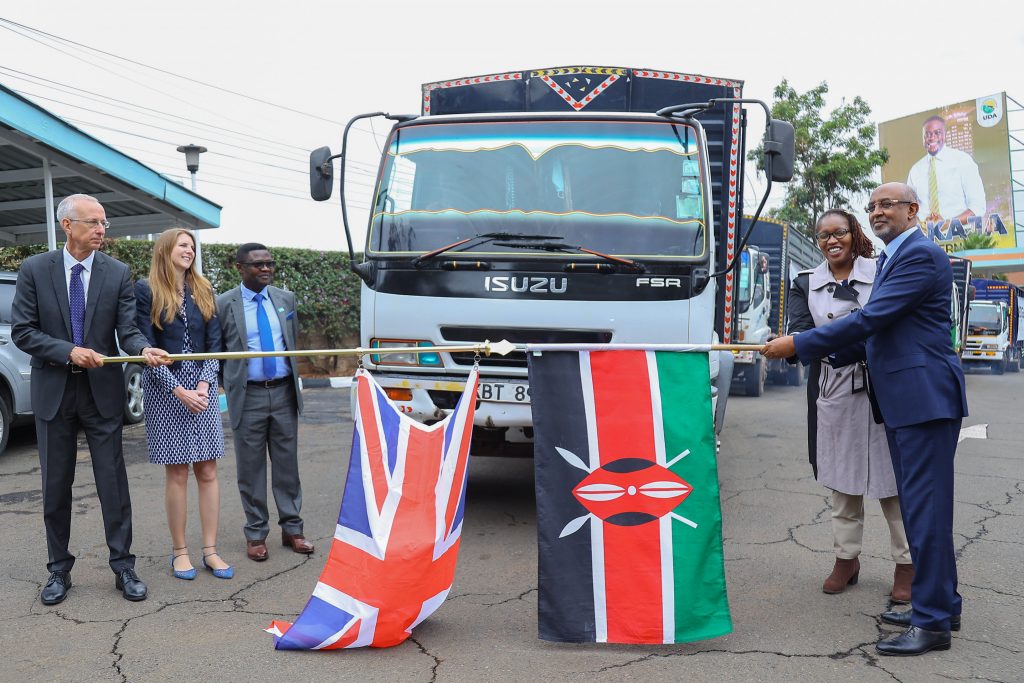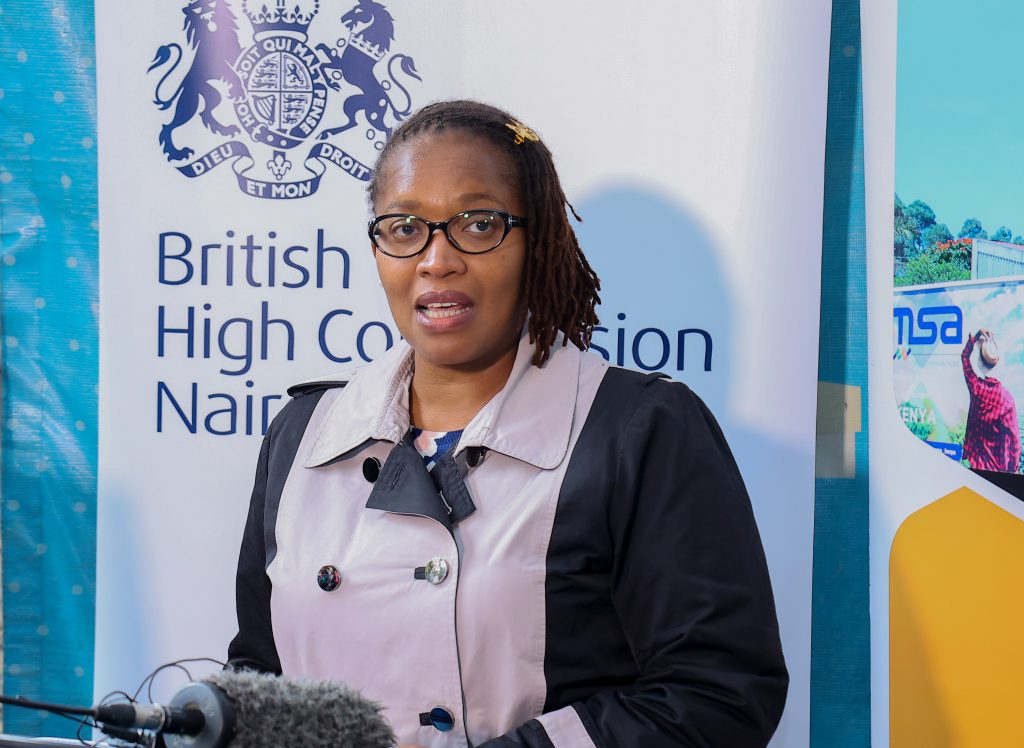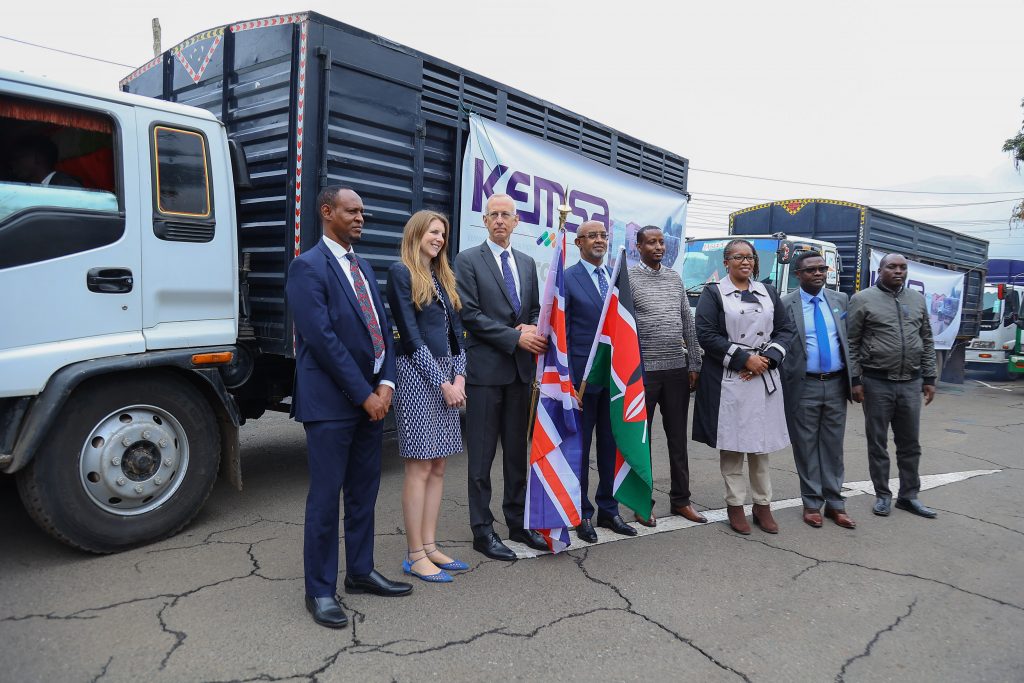UNICEF RUTF Flag Off – Kenya Medical Supplies Authority – KEMSA
UNICEF RUTF Flag Off
UNICEF RUTF Flag Off

The Government, KEMSA and UNICEF flag-off Kshs 30 million Ready to Use Therapeutic Food (RUTF) to four counties
The Government, KEMSA and UNICEF flag-off Kshs 30 million Ready to Use Therapeutic Food (RUTF) to four countiesThe Government, KEMSA and UNICEF flag-off Kshs 30 million Ready to Use Therapeutic Food (RUTF) to four counties
The Government, in conjunction with the Kenya Medical Supplies Authority (KEMSA) and UNICEF, have flagged off a consignment of high-nutrition food commodities to four drought-hit counties to mitigate malnutrition risks among children.
The Government, in conjunction with the Kenya Medical Supplies Authority (KEMSA) and UNICEF, have flagged off a consignment of high-nutrition food commodities to four drought-hit counties to mitigate malnutrition risks among children.
The Ready to Use Therapeutic Food (RUTF) consignment valued at more than Kshs 30 million is destined for the four counties of Turkana, Mandera, Wajir and Isiolo. The consignment is part of the KEMSA-UNICEF Integrated Supplies Programme funded by UNICEF and managed by the Authority to provide nutritious food commodities in 25 counties to curb malnutrition-related child mortality.
The Ready to Use Therapeutic Food (RUTF) consignment valued at more than Kshs 30 million is destined for the four counties of Turkana, Mandera, Wajir and Isiolo. The consignment is part of the KEMSA-UNICEF Integrated Supplies Programme funded by UNICEF and managed by the Authority to provide nutritious food commodities in 25 counties to curb malnutrition-related child mortality.
According to a recent UNICEF Global alert, at least 13.6 million children under the age of 5 suffer from severe wasting, which is responsible for 1 in 5 deaths among children under age 5, making it one of the top threats to child survival. A severely wasted child is up to 11 times more likely than a healthy child to die of common childhood illnesses such as pneumonia, the single largest infectious cause of death in children worldwide.
According to a recent UNICEF Global alertUNICEF Global alert, at least 13.6 million children under the age of 5 suffer from severe wasting, which is responsible for 1 in 5 deaths among children under age 5, making it one of the top threats to child survival. A severely wasted child is up to 11 times more likely than a healthy child to die of common childhood illnesses such as pneumonia, the single largest infectious cause of death in children worldwide.
Under the local programme, described as a sub-Sahara model for distributing nutrition commodities in remote food-insecure areas, KEMSA procures, warehouses and provides last-mile delivery of Ready to Use Therapeutic Feeds, Therapeutic Milk, Resomal and Anthropometric Equipment to more than 2,200 health facilities in the 25 counties.
Under the local programme, described as a sub-Sahara model for distributing nutrition commodities in remote food-insecure areas, KEMSA procures, warehouses and provides last-mile delivery of Ready to Use Therapeutic Feeds, Therapeutic Milk, Resomal and Anthropometric Equipment to more than 2,200 health facilities in the 25 counties. The flag-off of was witnessed by The Ministry of Health Chief Administrative Secretary Dr Rashid Aman, UNICEF representative in Kenya, Maniza Zaman, British High Commissioner to Kenya Jane Marriot, British Director General for Humanitarian and Development Nick Dyer and KEMSA CEO Terry Ramadhani at the Ministry of Health offices.
The flag-off of was witnessed by The Ministry of Health Chief Administrative Secretary Dr Rashid Aman, UNICEF representative in Kenya, Maniza Zaman, British High Commissioner to Kenya Jane Marriot, British Director General for Humanitarian and Development Nick Dyer and KEMSA CEO Terry Ramadhani at the Ministry of Health offices.

 The flag-off of was witnessed by The Ministry of Health Chief Administrative Secretary Dr Rashid Aman, UNICEF representative in Kenya, Maniza Zaman, British High Commissioner to Kenya Jane Marriot, British Director General for Humanitarian and Development Nick Dyer and KEMSA CEO Terry Ramadhani at the Ministry of Health offices.
The flag-off of was witnessed by The Ministry of Health Chief Administrative Secretary Dr Rashid Aman, UNICEF representative in Kenya, Maniza Zaman, British High Commissioner to Kenya Jane Marriot, British Director General for Humanitarian and Development Nick Dyer and KEMSA CEO Terry Ramadhani at the Ministry of Health offices.
Speaking at the event, KEMSA CEO Terry Ramadhani said the provision of the lifesaving therapeutic foods sourced from local manufacturers had helped reverse stunted growth and development due to a chronic lack of essential nutrients in the diets of thousands of children in these ASAL areas.
Speaking at the event, KEMSA CEO Terry Ramadhani said the provision of the lifesaving therapeutic foods sourced from local manufacturers had helped reverse stunted growth and development due to a chronic lack of essential nutrients in the diets of thousands of children in these ASAL areas.
KEMSA’s partnership with UNICEF, she said, is a showcase of the Authority’s commitment to sustain organizational reforms that guarantee end-to-end visibility of health products and strengthen accountability at all levels of the supply chain, from procurement to client deliveries.
KEMSA’s partnership with UNICEF, she said, is a showcase of the Authority’s commitment to sustain organizational reforms that guarantee end-to-end visibility of health products and strengthen accountability at all levels of the supply chain, from procurement to client deliveries.
The Authority, she said, is pursuing a three-pronged transformation strategy focusing on driving operational excellence, enhancing customer experience and repositioning the organization.
The Authority, she said, is pursuing a three-pronged transformation strategy focusing on driving operational excellence, enhancing customer experience and repositioning the organization.
“For clients such as UNICEF, at KEMSA, we offer quality agency services such as quantification, procurement, order management, warehousing, quality assurance, distribution, monitoring & evaluation,” Ramadhani said. She added, Through this Programme, we have designed and effectively delivered a lifesaving supply chain solution that is now a sub-Sahara model for distributing nutrition commodities in remote food-insecure areas.”
“For clients such as UNICEF, at KEMSA, we offer quality agency services such as quantification, procurement, order management, warehousing, quality assurance, distribution, monitoring & evaluation,” Ramadhani said. She added, Through this Programme, we have designed and effectively delivered a lifesaving supply chain solution that is now a sub-Sahara model for distributing nutrition commodities in remote food-insecure areas.”
Available monitoring and evaluation data by UNICEF and KEMSA indicates that providing therapeutic foods has helped reverse stunted growth and development for thousands of children in ASAL areas. For example, in the last distribution cycle, monitoring reports have recorded an increased cure rate of more than 75% for previously malnourished beneficiaries who are now accessing therapeutic food commodities. The Global Acute Malnutrition rate for Kenya has also reduced from 26% in 2016 to the current 20.1% in the ASAL areas due to availability of the lifesaving commodities.
Available monitoring and evaluation data by UNICEF and KEMSA indicates that providing therapeutic foods has helped reverse stunted growth and development for thousands of children in ASAL areas. For example, in the last distribution cycle, monitoring reports have recorded an increased cure rate of more than 75% for previously malnourished beneficiaries who are now accessing therapeutic food commodities. The Global Acute Malnutrition rate for Kenya has also reduced from 26% in 2016 to the current 20.1% in the ASAL areas due to availability of the lifesaving commodities.
Since 2015, KEMSA has distributed UNICEF-supported commodities worth approximately Kshs 2 billion to over 2,200 health facilities in the 25 ASAL counties and helped ensure zero deaths due to malnutrition.
Since 2015, KEMSA has distributed UNICEF-supported commodities worth approximately Kshs 2 billion to over 2,200 health facilities in the 25 ASAL counties and helped ensure zero deaths due to malnutrition.
The programme currently provides nutritious food commodities to ASAL and food-stressed counties, including Turkana, Laikipia, Nairobi, Baringo, West Pokot, Marsabit and Mandera. Other counties include Wajir, Garissa, Samburu, Isiolo, Tana River, Kwale, Kilifi, Lamu, Mombasa, Taita Taveta, Kajiado, Narok, Machakos, Kitui, Makueni, Meru, and Kisumu.
The programme currently provides nutritious food commodities to ASAL and food-stressed counties, including Turkana, Laikipia, Nairobi, Baringo, West Pokot, Marsabit and Mandera. Other counties include Wajir, Garissa, Samburu, Isiolo, Tana River, Kwale, Kilifi, Lamu, Mombasa, Taita Taveta, Kajiado, Narok, Machakos, Kitui, Makueni, Meru, and Kisumu.
As part of KEMSA’s statutory mandate, the Authority is also ensuring optimal and accountable stocking of nutritional commodities at health facilities and KEMSA national and regional warehouses based on consumption, thus averting stockouts, overstocking, understocking and other forms of wastage. The custom-designed integrated supply chain model has also eased the quantification process for therapeutic food commodities.
As part of KEMSA’s statutory mandate, the Authority is also ensuring optimal and accountable stocking of nutritional commodities at health facilities and KEMSA national and regional warehouses based on consumption, thus averting stockouts, overstocking, understocking and other forms of wastage. The custom-designed integrated supply chain model has also eased the quantification process for therapeutic food commodities.
British Director General for Humanitarian and Development Mr. Nick Dyer expressed his gratitude to the UK government and UNICEF for the donation and support in assisting drought affected communities in Kenya.
British Director General for Humanitarian and Development Mr. Nick Dyer expressed his gratitude to the UK government and UNICEF for the donation and support in assisting drought affected communities in Kenya.
“The therapeutic foods will save the lives of over half a million children in the Arid and Semi-Arid Lands (ASAL) affected by the worst seen drought in decades,” he noted.
“The therapeutic foods will save the lives of over half a million children in the Arid and Semi-Arid Lands (ASAL) affected by the worst seen drought in decades,” he noted. UNICEF Representative to Kenya Maniza Zaman said the current drought situation has seen over half a million children in the ASAL counties in need of treatment for acute malnutrition, 168,000 of whom require treatment for severe acute malnutrition.
UNICEF Representative to Kenya Maniza Zaman said the current drought situation has seen over half a million children in the ASAL counties in need of treatment for acute malnutrition, 168,000 of whom require treatment for severe acute malnutrition.

 UNICEF Representative to Kenya Maniza Zaman said the current drought situation has seen over half a million children in the ASAL counties in need of treatment for acute malnutrition, 168,000 of whom require treatment for severe acute malnutrition.
UNICEF Representative to Kenya Maniza Zaman said the current drought situation has seen over half a million children in the ASAL counties in need of treatment for acute malnutrition, 168,000 of whom require treatment for severe acute malnutrition.
He reiterated UNICEF’s continued support in responding to the current prolonged and severe drought situation experienced in various parts of the country.
He reiterated UNICEF’s continued support in responding to the current prolonged and severe drought situation experienced in various parts of the country.